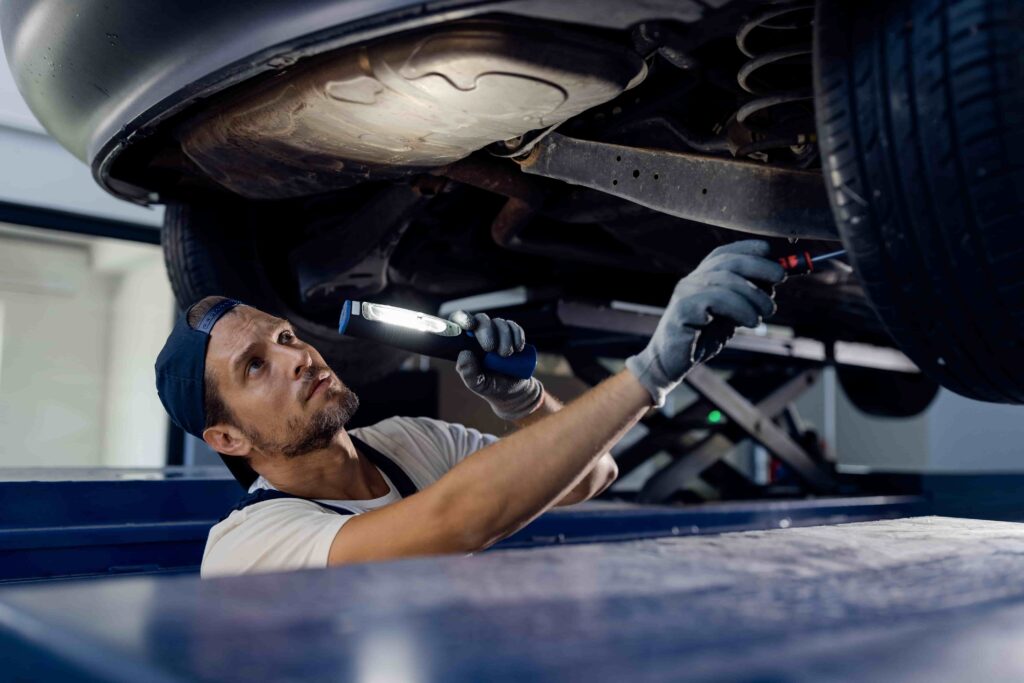Driving enthusiasts and DIY mechanics alike have long sought ways to enhance their vehicles’ performance and aesthetics. Among the many innovations in the automotive world, air suspension stands out as a game-changer. This blog post explores the versatile world of air suspension, offering insights into its history, functionality, and advantages. We’ll guide you through the process of lowering and raising your car using this system, ensuring you understand the safety and customization possibilities. Whether you’re a seasoned car enthusiast or just starting to explore auto customization, air suspension offers a unique way to transform your ride.
Introduction to Air Suspension
Air suspension isn’t a new concept. It dates back to the early 20th century when inventors began experimenting with alternatives to traditional coil springs. Initially used in buses and trucks for improved load handling, it gained popularity in the automotive industry for its ability to provide a smoother and more comfortable ride. Over the decades, it has evolved from a niche technology to a go-to solution for car enthusiasts seeking both performance and aesthetic benefits.
The allure of air suspension lies in its adaptability. Unlike static suspension systems, air suspension allows drivers to adjust ride height and stiffness at the push of a button. This adjustability is particularly appealing to those who enjoy taking their cars to shows or wish to improve the vehicle’s handling on diverse road conditions. With its rich history and proven effectiveness, air suspension has secured its place as a preferred choice for many automotive aficionados.
Understanding the Basics
To fully appreciate air suspension, it’s essential to understand how it works. At its core, an air suspension system replaces traditional coil or leaf springs with air springs. These air springs are essentially rubber bladders or bellows that can be inflated or deflated to adjust the vehicle’s height and ride quality.
Key components of an air suspension system include the air springs, compressor, air lines, and control system. The compressor is responsible for inflating the air springs, while the air lines transport air to and from the springs. The control system, often integrated with the vehicle’s electronics, allows the driver to adjust the air pressure and, consequently, the ride height.
The interplay between these components ensures a smooth and adaptable driving experience. Air suspension systems can be customized to suit different driving needs, from achieving an aggressive stance for shows to raising the ride height for off-road adventures. Understanding the basics of how these systems work is crucial for anyone looking to invest in or work on air suspension.
Benefits of Air Suspension
Air suspension offers numerous benefits that make it attractive to car enthusiasts. One of the most significant advantages is improved ride quality. The ability to adjust the suspension means that drivers can tailor the ride to their preference, whether they desire a soft and cushioned experience for long drives or a firm setup for spirited driving.
Another key benefit is adjustability. With air suspension, you can easily lower your car for a sleek, aggressive look at car shows and raise it for practicality when navigating speed bumps or uneven terrain. This flexibility is unmatched by traditional suspension setups, which often require compromises between aesthetics and functionality.
Customization is another major draw. Air suspension systems can be fine-tuned to match personal style preferences, allowing for individualized modifications that reflect the owner’s personality. Whether you want to stand out at a car meet or optimize your vehicle’s performance, air suspension provides the tools to achieve your goals.
DIY Guide to Lowering and Raising Your Car
Ready to take control of your car’s ride height? With a few tools and some patience, you can install an air suspension system yourself. First, gather the necessary equipment, including the air springs, compressor, air lines, and control kit. Ensure you have a safe workspace and the right tools to lift your vehicle.
Begin by removing the existing suspension components, following your car’s manual for guidance. Install the air springs in place of the coil springs, securing them with the provided hardware. Next, mount the compressor in a dry, accessible location, usually in the trunk or under the hood.
Run the air lines from the compressor to the air springs, taking care to avoid heat sources and moving parts. Finally, connect the control system, which will allow you to adjust the ride height from the driver’s seat. Test the system for leaks and ensure everything is functioning correctly before hitting the road.
Safety and Maintenance
Ensuring your air suspension system remains in top condition is crucial for both performance and safety. Regular checks are a must, as even minor leaks can impact ride quality and overall vehicle handling. Inspect the air lines and connections for wear and tear, and replace any components showing signs of damage.
Proper maintenance also includes periodic cleaning of the air springs and compressor to prevent dirt and debris buildup. Keeping the system clean will extend its lifespan and maintain optimal performance. Additionally, check the system’s electronics and control unit for any malfunctions that might affect adjustability.
Routine inspections and proactive maintenance will not only prolong the life of your air suspension system but also ensure a safe and enjoyable driving experience. Remember, a well-maintained system is key to reaping the full benefits of air suspension.
Customization and Personalization
One of the most exciting aspects of air suspension is the ability to personalize your setup. From choosing the color of your air springs to customizing the control interface, there are countless ways to make your air suspension system uniquely yours. For those who frequent car shows, these customizations can set your vehicle apart and showcase your personality.
Consider integrating LED lighting with your air suspension system for a striking visual effect. Many enthusiasts also opt for custom air tank designs or paint jobs that complement their vehicle’s aesthetic. Additionally, tuning the suspension to reflect your driving style can enhance both performance and comfort.
Customization allows you to push the boundaries of what’s possible with your vehicle. Whether you prioritize aesthetics, performance, or a combination of both, air suspension provides the canvas for your automotive creativity.
Conclusion
Air suspension represents a perfect blend of form and function, offering car enthusiasts the ability to control their vehicle’s ride height and quality to suit their preferences. From its beginnings as a tool for commercial vehicles to its current status as a popular choice for auto customization, air suspension has proven its value time and again.
For those interested in exploring its potential, air suspension offers a pathway to enhanced performance, personalized customization, and improved driving experiences. Whether you’re a seasoned mechanic or a new enthusiast, the benefits of air suspension are within reach.





